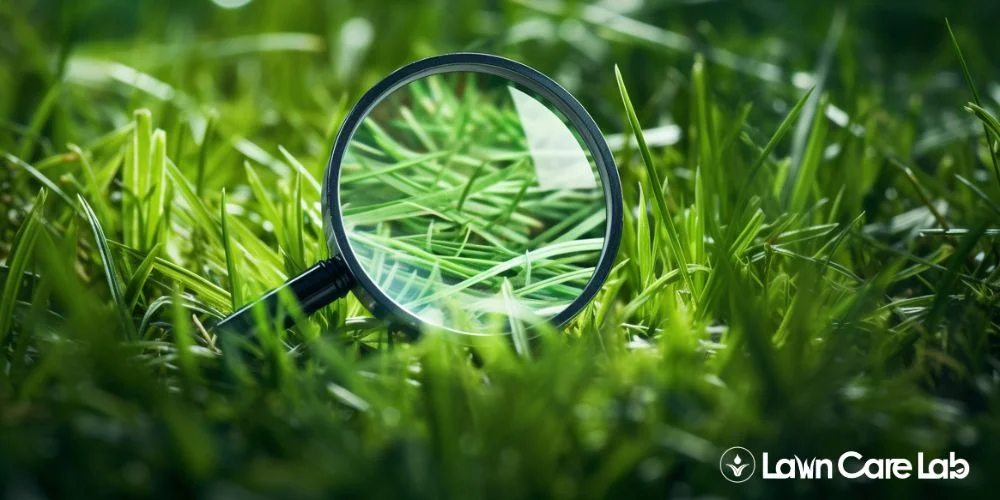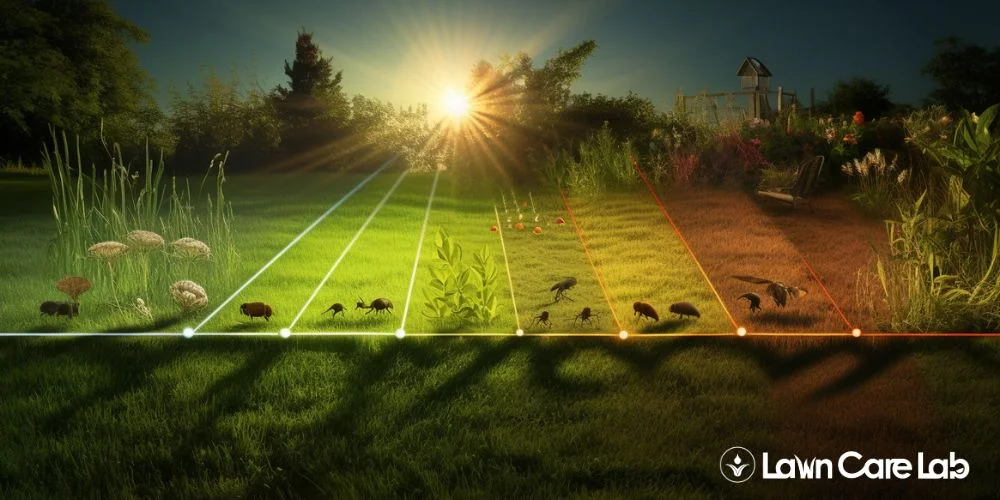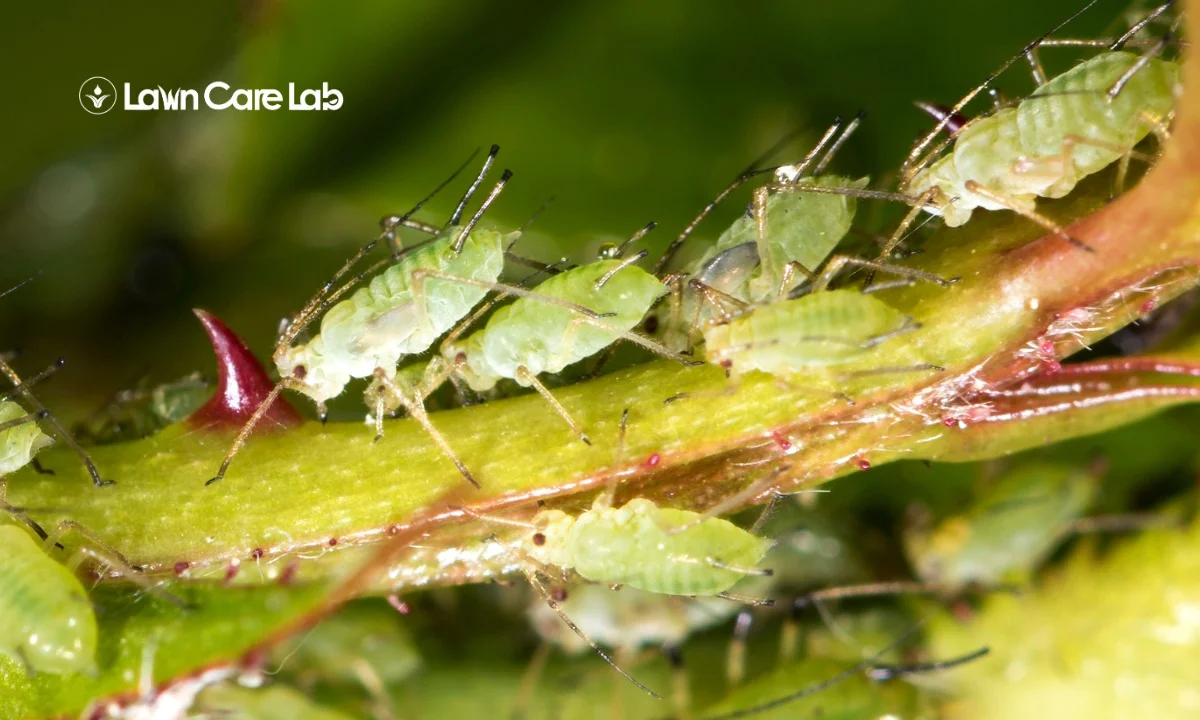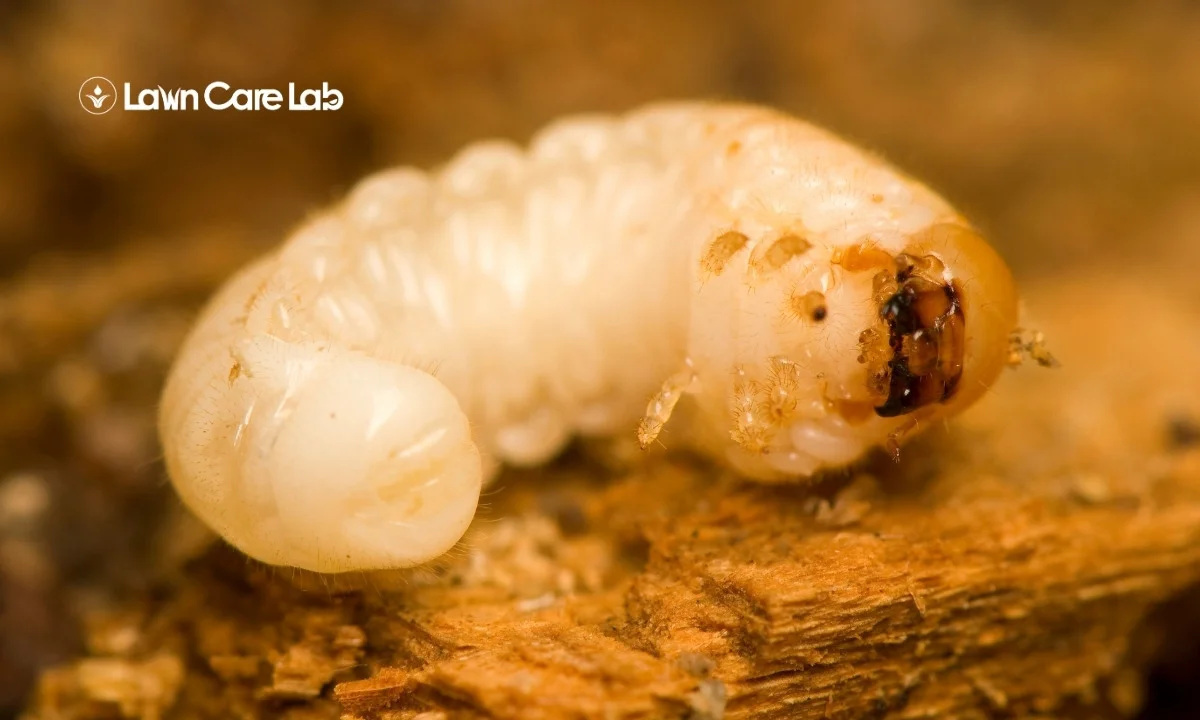Are you tired of bugs treating your lawn like an all-you-can-eat buffet?
This article equips you with simple strategies to regain control and declare victory over these uninvited guests.
We’ll help you identify common culprits, guide you through prevention methods, and explore effective treatment options.
Highlights
- Core aeration and dethatching tools improve soil structure, promote root growth, and enhance water infiltration for a healthy lawn.
- Proper irrigation, including adjusting watering schedules based on rainfall, prevents issues like root rot and stress.
- Lawn care calendars help guide maintenance tasks throughout the year, including seasonal fertilizing and selecting the right grass type for your climate.
- Natural pest control methods such as physical/mechanical removal, biological controls, and natural repellents can effectively manage pests while minimizing environmental impact.
Table of Contents
Know Your Enemy: Identifying Common Lawn Pests
So let’s dive into the world of those sneaky little critters – insects, sly diseases like fungus, and those stubborn party crashers – weeds that could be ruining your perfect lawn party.
Identifying common lawn pests is crucial in maintaining a healthy and vibrant lawn. Here are some key pests to watch out for:
Insects
Battling with pesky insects in your lawn? You’re not alone, but don’t fret – there’s a simple strategy that’ll have those grubs and chinch bugs packing their bags. It’s all about understanding insect lifecycles and attractants.
First things first, not all creepy crawlies are villains. There are beneficial insects too!
These little heroes like ladybugs and spiders help control pest populations by munching on them for breakfast (talk about natural pest control!). So, before you go on a bug-killing spree, know who’s friend or foe.
Next, consider pollinator protection. Bees love your flowers as much as you do! Planting a variety of flora can attract these helpful buzzers while keeping pests at bay.
And finally, introducing predators into the ecosystem can be quite an effective strategy; just imagine the enemy’s face when they see their own ‘boogeyman’ arrive!
Diseases
Just when you think you’ve got it all figured out, a nasty fungal or bacterial disease comes, turning your once-green paradise into a warzone of brown patches and wilting foliage, you’re left scratching your head, wondering if those fungal infestations are the result of last week’s pizza night gone awry!
Disease diagnosis can be tricky; one minute, you’re dealing with bacterial blights, and next, virus implications are changing the game entirely. But don’t let these soil-borne pathogens get the best of you.
Remember that old saying: ‘Knowledge is power!’
Weeds
In the labyrinth of gardening challenges, you’ll inevitably encounter weeds, those unwelcome squatters that make their home amongst your verdant retreat, robbing your precious plants of vital nutrients and sunlight. You might feel like a detective on a green crime scene – Weed Identification becomes your new specialty. Is it the notorious dandelion or perhaps sneaky crabgrass?
Once you’ve identified these green invaders, bring out the big guns. Organic herbicides are nature’s version of pest control and are as tough as nails against weeds.
Mulching benefits also strut into this weed war with style; blocking sunlight prevents weed growth.
Companion planting is another strategy that can foil weeds’ evil plans. Designed to confuse pests and hinder their lifecycle, it’s an effective way to keep them at bay. With these strategies, achieving master lawn pest control won’t seem so prickly!
Prevention is the Best Medicine

The first step is promoting overall health. This means providing your lawn with the nutrients it needs through proper fertilization and ensuring it receives the right amount of sunlight.
Next, choose those tough-as-nails-resistant varieties. These grasses are bred to be more resilient against pests and diseases, making them a great choice for a low-maintenance lawn.
Master the art of thatch control and aeration. Thatch is the dead grass and debris layer that can build up on your lawn over time.
Perfect your irrigation game. Proper watering is crucial for a healthy lawn.
Lastly, become best friends with your lawn care calendar.
Promote Overall Lawn Health
Promoting overall lawn health isn’t just a walk in the park; nurturing a living, breathing green carpet that repels pests and diseases with lush vigor. Ensuring soil nutrition is paramount – think of organic fertilizers as tasty smoothies for your grass.
Let’s break it down:
| Healthy Habit | Lawn Benefit |
|---|---|
| Soil Nutrition | Returns nutrients to the soil, and reduces waste. |
| Grass Cycling | Returns nutrients to the soil and reduces waste. |
| Organic Fertilizers | Enriches soil, safer for pets and kids. |
| Mulching Benefits | Retains moisture and suppresses weeds. |
| Seasonal Mowing | Retains moisture, and suppresses weeds. |
Remember: mowing isn’t just for tidiness! It’s like giving your lawn a trendy haircut every season. The right mulching can be like adding a stylish hat on top!
Choose Resistant Varieties
Choosing resistant grass varieties is like playing a winning hand in lawn care – it’s all about stacking the deck in your favor! As you’d pick a robust poker hand, opt for Resilient Grasses.
Make Seed Selection your trump card – go for Disease Resistant Turf and watch pests fold their hands in surrender.
But don’t stop there! Raise the stakes with Genetic Modifications. These are not mutant grasses from a sci-fi movie but smartly bred cultivars designed to fight off common turf diseases.
Lastly, play your Climate Specific Varieties ace-high. Remember, what thrives in Texas may wilt in Maine.
Thatch Control and Aeration
Dig deeper into thatch control and aeration – vital to maintaining a healthy, vibrant yard. Here’s your golden ticket to mastering these techniques:
- Thatch Decomposition: It sounds like an episode from CSI: Lawn Care, but it’s simple – break down that pesky layer of dead grass!
- Aeration Benefits: Unleash your lawn’s inner Beyonce and let it breathe!
- Core Aeration Process: This isn’t rocket science, folks. Simply pull out small cores of soil to allow air and water access.
- Soil Compaction Issues: Don’t be that person who squishes their lawn. Compacted soil suffocates roots and promotes pests.
- Dethatching Tools: Equip yourself with the right tools for dethatching. Think of it as the lightsaber for your Jedi lawn care routine.
Proper Irrigation
Watering isn’t just about turning on the sprinkler and hoping for the best. It’s an art; it’s a science; it’s… well, okay, maybe not an art but a science!
Watering schedules are paramount here—ignore them at your own peril. You see, soil moisture is like your lawn’s favorite cocktail—it has to be just right! Too little or too much can turn your lush green carpet into a sad brown rug.
Rainfall impact? That’s nature’s wildcard in this game of Green-Thumb Poker. Sprinkler systems and drought management are your ace in the hole against Mother Nature’s unpredictable mood swings.
Lawn Care Calendars
Navigating the seasons with a lawn care calendar is like having a roadmap for your garden’s journey. It guides you on when to fertilize, water, and maintain that emerald paradise. It’s not just about mowing and watering; it’s about knowing what to do and when.
- Seasonal Fertilizing: Timing is key here! Your grass is hungrier than a teenager’s after football practice in spring and fall.
- Grass Type Selection: Choose wisely or face the wrath of an unsightly lawn! Different grasses have different needs. Some are divas requiring constant attention, while others are low-maintenance beauties.
- Mulching Benefits & Organic Composting: Mulch isn’t just about aesthetics. It helps retain moisture, insulates soil temperatures, and improves pH balance.
When Pests Attack: Treatment Options

Alright, you’ve tried playing nice with the pests in your lawn, and they’ve decided to stick around. Now, it’s time to roll up your sleeves and consider more aggressive tactics.
Physical or mechanical removal is one option. This involves physically removing the pests from your lawn, whether by squashing them or using tools like traps or barriers.
Another option is biological controls, where you introduce natural enemies of the pests to help control their population. This can include beneficial insects or animals that prey on pests or even certain types of bacteria or fungi that can disrupt their life cycles.
Finally, there are judicious chemical control methods. Yes, we’re talking pesticides, but in a smart way.
Let’s dive into these exciting strategies for removing your turf from those pesky invaders.
Physical/Mechanical Removal
Believe it or not, the age-old practice of physically removing pests from your lawn by hand is still a surprisingly effective method, even in our high-tech world. This strategy might sound as outdated as using a rotary phone, but don’t be fooled! There’s nothing like getting up close and personal with those pesky invaders through good old-fashioned hand-picking.
But if you fancy less hands-on methods, other physical strategies are at your disposal. Barrier methods can play defense between your beloved greens and their voracious visitors.
Trap deployment turns your lawn into a pest-free zone by luring them to an early retirement party. Pest vacuuming sucks up unwanted guests faster than you can say ‘bug off.’
Biological Controls
Venturing into the world of biological controls, you’ll find an army of beneficial organisms ready to wage war against your garden’s uninvited guests.
You might be thinking, ‘I’ve got to set loose a horde of spiders in my backyard?’ Well, not necessarily. Your secret weapon could be as simple as companion planting or a well-timed crop rotation.
The magic trick here is predator introduction. Let nature do its thing by introducing beneficial insects like ladybugs and praying mantises that love to munch on pests. And don’t overlook insect diseases; they’re like microscopic pest assassins!
Judicious Chemical Controls
When your garden looks like a battlefield with your plants on the losing side, it might be time to bring out the big guns: judicious use of chemical controls.
This isn’t about going Rambo on those pests; we’re aiming for eco-friendly options that safeguard our green neighbors too.
So here’s your four-step action plan:
- Always prioritize chemical safety. Dress like you’re in a sci-fi movie – goggles, gloves, and all.
- Timing applications is crucial. You don’t want to waste your ammo during a rainstorm.
- Get soil testing done beforehand. It’s like gathering intelligence before launching an attack.
- Keep an eye on residual effects, which could be harmful.
Simple Strategies for Pest-Free Lawns

You can maintain a lush, pest-free lawn by deploying simple and effective strategies that don’t require advanced knowledge of horticulture. It’s as easy as pie but without the sticky mess. Let’s dive into it!
Firstly, embrace natural repellents like garlic and hot pepper sprays – like your overbearing aunt at family gatherings; pests can’t stand them!
Next up is companion planting. Think of it as setting up blind dates for your plants where everyone benefits.
Don’t forget predatory insects – these little warriors are nature’s pest control agents. They’re like tiny superheroes in your backyard!
Alternatively, homemade sprays and eco-friendly pesticides do the trick with minimal impact on Mother Earth.
Conclusion
So, you’re ready to show those pesky pests the door? Excellent!
It’s all about prevention, but when they invade, don’t panic – there are solutions.
Keep these strategies up your sleeve and watch as your lawn becomes the envy of Eden itself.
FAQs on Lawn Pest Control
How do I treat my lawn for bugs?
Treating your lawn for bugs involves several steps. First, identify the type of pests invading your lawn. Then choose the appropriate pesticide and apply it according to the manufacturer’s instructions. Also, regularly maintain a healthy lawn by regularly watering, mowing, and fertilizing.
Should I spray my lawn for bugs?
Yes, spraying your lawn for bugs is an effective method to control pests. Use a safe product for your lawn type and the environment. Follow the instructions carefully to ensure effective treatment.
What do pest control companies use for lawns?
Pest control companies use a variety of chemicals to treat lawns, including insecticides, fungicides, and herbicides. The specific chemical used depends on the type of pest problem. They may also use biological control agents like nematodes or bacteria for environmentally friendly options.
What pest is killing my grass?
Several pests, including grubs, chinch bugs, and sod webworms, can damage your grass. The type of damage can help identify the pest. For instance, brown patches may indicate a grub infestation, while chewed grass blades suggest chinch bugs.
What is destroying my yard?
Various factors can destroy your yard, including pests, diseases, poor soil quality, or improper watering and mowing practices. Identifying the cause of the damage is the first step toward resolving the issue.
When should I apply Triazicide to my lawn?
Triazicide should be applied to your lawn when pests are active, typically in the spring or early summer. It’s best to apply the product in the early morning or late evening when temperatures are cooler to minimize evaporation.
Should I spray my yard for bugs before or after mowing?
It’s better to spray your yard for bugs after mowing. This ensures the pesticide reaches the soil where many pests live and breed, maximizing its effectiveness.
- Special Considerations and Techniques for Maintaining Sloped Lawns - July 15, 2024
- How Green Spaces Influence Community Interactions - July 8, 2024
- Lawn Fungal Diseases: Identification and Treatment - July 3, 2024





